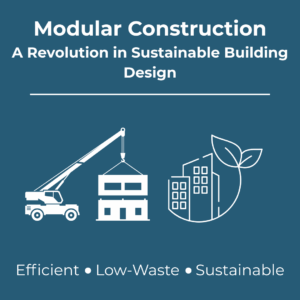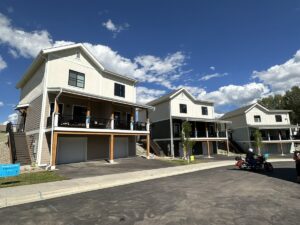Cost Segregation and Modular Construction: Maximizing Tax Benefits
Cost segregation can provide significant financial tax benefits to building owners, especially when applied to modular construction. By reclassifying specific building components as personal property, you can accelerate depreciation, reduce tax liabilities, and boost cash flow. The flexible design of modular construction makes it ideal for leveraging this tax strategy.
Understanding Cost Segregation
Cost segregation involves identifying and reclassifying certain parts of a building as personal property instead of real property. This reclassification allows you to depreciate these components over shorter periods—typically 5, 7, or 15 years—instead of the standard 39 years for commercial buildings. As a result, you can accelerate depreciation, leading to substantial tax savings in the early years of ownership.
Modular Construction’s Advantage in Cost Segregation
Modular construction assembles sections, or modules, off-site before bringing them together on-site. This method offers greater design flexibility, making it easier to identify components that qualify as personal property under IRS guidelines.
Because modular buildings can be deconstructed and relocated, you can classify major building portions as personal property. Interior walls, flooring systems, and certain mechanical and electrical systems may qualify as personal property due to their temporary nature and ease of relocation. This classification enables you to accelerate depreciation, reducing tax liabilities significantly.

IRS Tax Code and Modular Construction
The IRS recognizes the unique features of modular buildings, particularly their potential for relocation and reconfiguration. This recognition allows you to classify certain modular building components as personal property. The IRS permits this classification based on the building’s ability to be deconstructed, relocated, or repurposed.
Because modular buildings offer flexibility, you can argue that components like partitions, fixtures, and some mechanical systems are not permanent and thus qualify for accelerated depreciation. This interpretation under the IRS tax code provides substantial financial benefits, enabling you to recover your investment more quickly.
Financial Benefits for Building Owners
Applying cost segregation to modular construction provides significant financial advantages. By accelerating depreciation on qualifying components, you can reduce taxable income and increase cash flow. You can then reinvest this increased cash flow in your business, pay down debt, or save for future projects.
Moreover, the ability to deconstruct and relocate modular buildings offers additional financial flexibility. If the building’s use changes or if you decide to move to a different location, you can reassemble the modular structure elsewhere, preserving its value. This adaptability enhances the building’s long-term utility and return on investment.
Conclusion
In summary, cost segregation serves as a powerful tool for building owners, especially when applied to modular construction. By reclassifying specific components as personal property, you can accelerate depreciation, reduce tax liabilities, and increase cash flow. The flexible design of modular buildings makes them particularly well-suited for this tax strategy, offering significant financial benefits and long-term value. Please note that EVstudio does not provide legal or tax advice, and any strategies involving cost segregation and the unique circumstances of your project should first be evaluated by your tax and legal advisors. Through our proprietary Reversible Design (TM) process, EVstudio’s team of Architecture and Engineering specialists can design your project in a specific way to take advantage of the ability to deconstruct and relocate modules in a modular project. Please contact us to discuss your next project.
References
- U.S. Internal Revenue Service (IRS). (2023). IRS Cost Segregation Audit Techniques Guide. Retrieved from IRS.gov.
- Modular Building Institute (MBI). (2023). Modular Construction and Tax Benefits: A Guide for Building Owners. Retrieved from MBI.
- Ernst & Young (EY). (2022). Maximizing Tax Benefits Through Cost Segregation in Modular Construction. Retrieved from EY.










